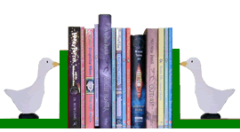Pricing is an issue for all businesses, not just self-published authors. The most important thing to remember is that the right price for any product is the one that people will be willing to pay. And the best way to get to grips with that is to think how price influences what you buy yourself.
Suppose you want to buy a watch. There are eight on offer – one for £60, six for £20 and one for 99p. If you’re like me, you’ll look at the six that are the same price and decide that’s the going rate for a decent watch. The one for £60 looks expensive in comparison so you’re likely to reject it unless there is a compelling reason why it’s worth the extra money. And the one for 99p looks too cheap which suggests there might be something wrong with it.
The same applies to books. If yours is much more expensive than all the similar books on the market, you’ll need to work hard to persuade readers that the extra cost is worthwhile. And pricing too low on a permanent basis can sometimes give the impression that the book is poor quality. However, everyone loves a bargain so reducing the price for a limited period can influence buyers a great deal. Think how you might have reacted if the £60 watch was reduced to £20 for one week only. Which of those 7 equally priced watches would you have been most likely to buy?
Pricing ebooks
The costs of producing an individual ebook are so low you can almost ignore them. All you have to part with is the share to the retailer. The rest is yours to keep so you can afford to experiment with different prices to see how readers react. This is easiest to do if your book is only available on Amazon as you’ve only got one outlet to worry about, but changing prices on other outlets through Draft2Digital is quite quick too.
If you have a print edition of your book, the price of that will affect how people feel about the ebook price. Readers expect the ebook to be cheaper so pricing the two the same will make your ebook look expensive and put buyers off. But pricing the ebook well below the print price will make it look like good value, even if that price might have looked high on its own. As a rough guide, pricing an ebook at one third of the price of the print book seems to work.
Pricing print books
You have less flexibility when pricing print books because you have to cover the cost of producing the individual book as well as the discount to the retailer (which can be as high as 60%). As a result, the price of your print edition will need to be substantially higher than your ebook in order to make a profit. However, if you want to sell many copies, your book needs to cost about the same as other books of a similar type.
This is really important. One bookshop manager told me that the main reason he turns down many self-published books is because they are too expensive. He can only make money if he sells books, and he knows his customers won’t pay £12 for a paperback novel from an unknown writer when the competing titles are all priced at £7.99. So before you decide on a price, research the cover price of books of a similar type. (That’s the full list price – not the discounted price that often shows on Amazon.)
Non-fiction books tend to be more expensive than novels so it’s easier to be competitive when pricing those. The reverse is true of children’s books which tend to be cheaper than books for adults so being competitive is more difficult although it is still essential.
Once you’ve done your research, do some sums to work out how much profit you will make at the various prices you might charge. Make sure you include the discount to the retailer which is always at least 35% and often higher, especially if you’re selling through a wholeseller. Obviously you’ll save that if you sell direct but you still need to take postage into account.
Make sure you do these calculations before you commit to producing your print book. If you can’t afford to price it competitively without making a loss, you may need to have a rethink about the best way forward. But sometimes it’s worth having a print-on-demand version of your novel, even if the profit is tiny as it gives you something to sell at events and to give to reviewers.
Diana Kimpton
